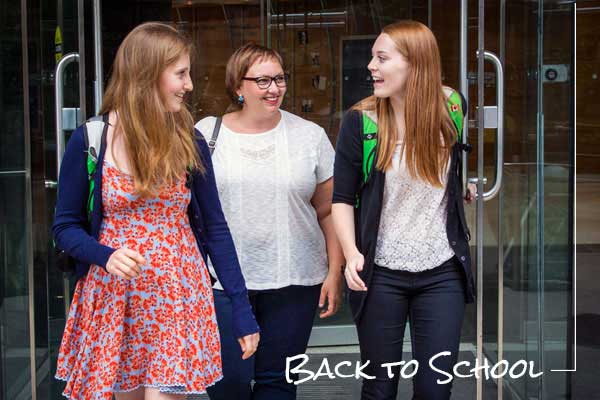
U of T medical students move from classroom to community
Published: September 14, 2015
As part of her medical-school training, second-year student Rebecca Jackson meets up regularly with a 13-year-old girl who has long faced complex medical conditions.
But the two don’t talk much about health. Instead, they make friendship bracelets and eat ice cream together, and are planning an upcoming trip to Riverdale Farm.
Through a partnership between U of T, Big Brothers Big Sisters of Toronto and The Peer Project, Jackson is serving as a mentor in a program for a hard-to-match youth. The children may have behavioural issues or other factors such as illness or an unstable family situation that may make it difficult to partner them with an adult role model.
For Jackson, it’s quite a contrast from her packed schedule of anatomy, cell biology and pharmacology lessons. But what she’s learning is directly relevant to her future work as a physician.
“Patients are a lot more than who they are in the hospital, and they sometimes have a lot going on in their lives,” says Jackson. “This is giving me experience talking and relating with someone younger than me. I’m learning ways to make her feel comfortable.”
The placement is part of a new U of T medical-school course launched last year called Community, Population and Public Health, directed by Dr. Allison Chris, a family physician and public health and preventive medicine specialist. Students in first and second years collaborate with organizations around the city that support health in diverse ways – from mental health and supportive housing advocacy groups to cancer survivorship and disease management programs.
The program gives community partners access to dedicated and goal-oriented students who deliver a needed service. Medical students, in turn, get exposure to people they might not have contact with otherwise. It gives future doctors an intimate understanding of social and physical determinants of health, and perhaps challenges their judgments too. They also learn more about the variety of community groups available that could help support their future patients.
“Even if our students never practice in Toronto, they’ll come away knowing what type of organizations to look for,” says Roxanne Wright, who coordinates the community placement component of this course. With a background teaching at-risk youth and working in community education, she has a strong understanding of the important role these groups can play. And, she argues, an organization doesn’t need to have “health” in the title to be supporting health.
“A lot of health care takes place outside the doctor’s office or the hospital. The hope is the students will learn how community partners can be real partners in health.”
That was a welcome lesson for Heather O’Halloran, another second-year medical student. Her community work with FoodShare started just after a course on metabolism and nutrition, in which she learned just how vital it is to eat well. “I was so happy to find out about this organization out there helping people eat right,” she says.
In particular, she was impressed with the organization’s work bringing healthy and delicious food into elementary school cafeterias through its Good Food Café program. “They’re developing healthy eating patterns in children, and that’s going to have a huge impact on their health going forward.”
In each of the course placements, the community partner, the student and the program administrators decide on a useful project for the students to deliver. O’Halloran will be developing a manual to help expand the Good Food Café model to other elementary schools.
Chris hopes this type of experiential learning will increase her students’ awareness and perspective.
“As physicians, I hope they’ll consider factors such as literacy, access to extended care plans and income in all patient interactions,” she says, “I’d hope they would consider things like ‘can my patient read the medication instructions, afford the medication prescribed or take time off work to attend an appointment?’”



